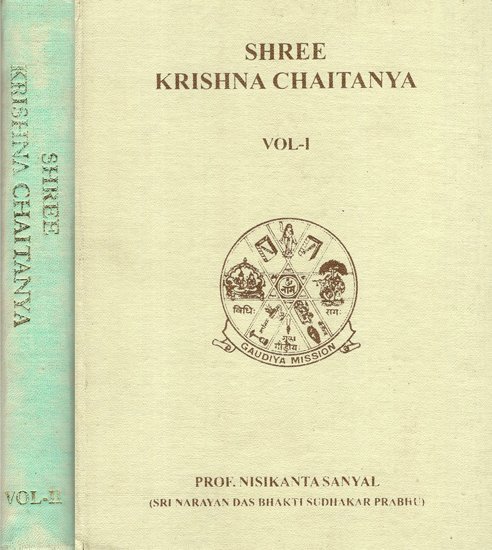Sri Krishna-Chaitanya
by Nisikanta Sanyal | 1933 | 274,022 words | ISBN-10: 818919500X
The present work is an attempt to offer a theistic account in the English language of the career and teachings of Sri Chaitanya (representing the Absolute Truth in His full manifestation). Sri Chaitanya came into this world to make all people understand that in reference to their eternal existence they should have nothing to do with non-Godhead. A...
Chapter 7 - The Founder-Acharyas (Introduction)
The contributions of Vishnuswami, Nimbaditya, Ramanuja and Madhva, the Founder-Acharyas of the four Vaishnava communities (sampradayas) of the present day, to the cause of theism, are so valuable and so necessary to know for a proper understanding of the theological position of Sri Chaitanya that we shall close our brief survey of the historical trend of theistic thought with a short account of the systems of the four great Vaishnava Acharyas who preceded Sri Chaitanya.
The necessity of sampradaya or organized community. in the domain of religion, has been explicitly recognized in the Shastras. The words of Sri Vyasadeva in the Padma Purana on this subject are to the effect that the verbal formulae that deliver from mental hallucinations (mantrams) are never effective except within the spiritual community; and the same authority goes on to observe that in the Fourth (KaIi) Age there will be for this purpose four theistic (Vaishnava) communities (sampradayas) founded by their respective Acharyas, by the will of Godhead. This is not the advocacy of sectarianism. It upholds the principles of association and continuity in religious life as against anarchism. If rightly understood it is the procedure that is naturally followed by all persons who are sincerely minded, prefer the good law to anarchy and association with good people to egoistic isolation, and are truly catholic, not merely by profession, but also in their conduct. Those pseudo-liberals who pose as being above any class or community, are only anarchists in disguise. The truer instinct of mankind has always been alive to the fundamental necessity of belonging to a good, i.e., well regulated, community.
The four communities (sampradayas) of the Iron Age are connected with the ancient times by their recognition of the ulterior authority of the eternal ancient teachers, viz,
The four Founder-Acharyas of the Iron Age professed to preach the views of those original teachers of the religion. Sri Rudra is the source of the teaching of Sri Vishnuswami; Sanaka, Sanatana, Sananda, Sanat Kumara, that of Sri Nimbarka Swami, Sri Lakshmidevi that of Sri Ramanuja Swami and the four-faced Brahma that of Madhva Swami, in the Iron Age.
The original pre-historic teachers, who are the ultimate source of the four communities, in the chronological order of their appearance, are,
- Lakshmi, the eternal and inseparable Consort of Vishnu,
- Brahma sprung from the navel-lotus of Garbhodasayi Vishnu,
- Rudra sprung from the second Purusha, and
- The four Sanas who are the sons of Brahma born from the mind.
The chronological order of the Acharyas of the Iron Age is,
It is the empiricists who are responsible for the origination of the current notion that theism is a product of a particular stage of material civilization in its progressive onward march. It will be our purpose to prove in the next chapter that such a view is opposed to all historical experience. It is no doubt true that the revelationists do not admit the applicability of the theory of evolution in its present form to spiritual subjects as it does not recognize the existence of any other entity except matter and mind. The history of spiritual evolution is connected with the progress of material civilization correspondingly and negatively, and not causally, the latter only serving to bring out that aspect of the former which happens to be the most intelligible to itself at the stage. This difference is wholly overlooked by materialistic evolutionists and no less by the so-called critical school of historians who have essayed to treat of spiritual events. The transcendental aspect of theism is the oldest fact known to history and, philosophically speaking, is incapable of being evolved out of the empirical consciousness. The abandonment of no historical principle worth the name, is involved in the recognition of this fact as a fundamental and axiomatic truth even on the evidence, although necessarily negative in character, of our empirical experience as will appear from an impartial consideration of the historical facts contained in the next chapter.
